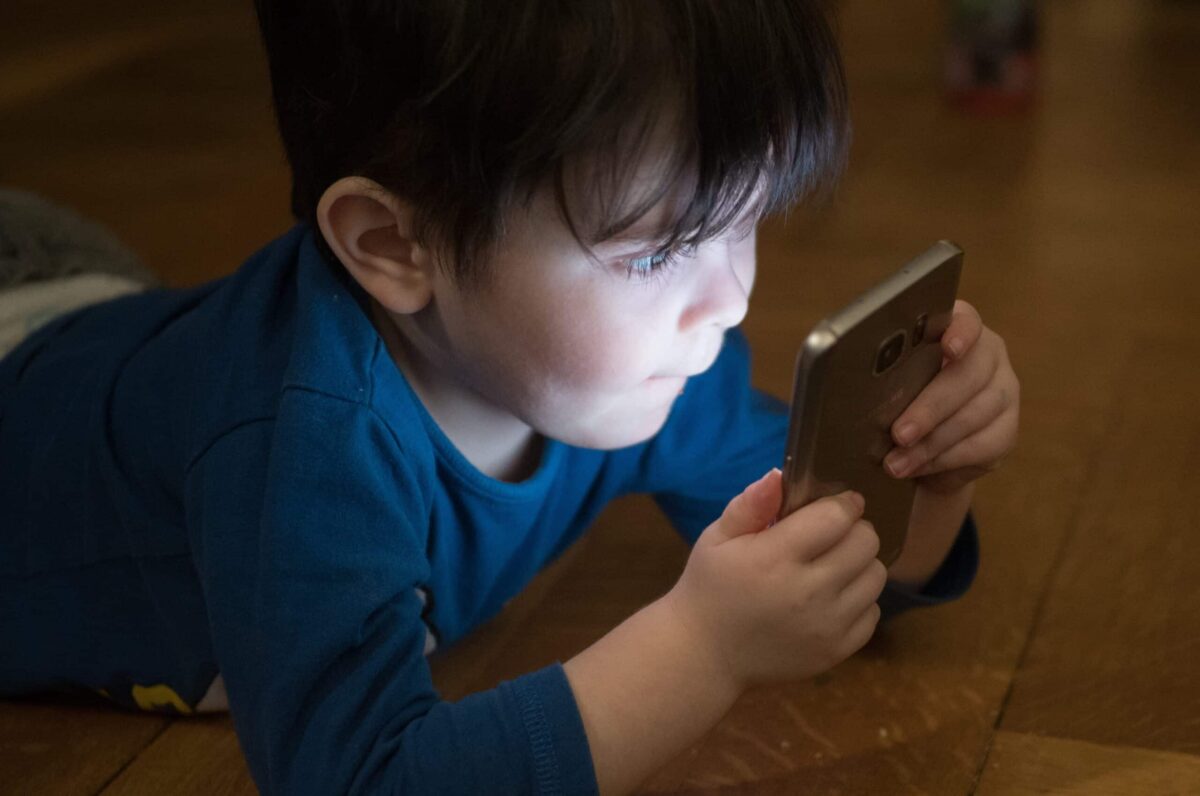Family of Origin
How and why do six-month-old infants interact with screens?

This post is part of our series on Digital Media and Children Under 3, published with collaboration from the journal, Infant Behavior and Development. The featured research appeared in a special issue that focused on how young children engage with technology and ways that parents can facilitate media engagement to promote positive development.
Key takeaways for caregivers
- Screens may be salubrious to but may moreover prove problematic for infants’ development.
- More than half of infants in a study on child minutiae had been exposed to screens by six months and many had a screen in the room where they slept.
- Mothers reported using screens with infants for at least 1-3 hours a day and during daily activities, such as during meals, when going to sleep, while waiting, and to wifely infants.
- Maternal stress did not predict the use of screens with infants, but moms’ educational level did.
- Research suggests that we need to learn from caregivers why they offer screens to their young children, as well as the need for increased guidance and resources for caregivers regarding exposure to and use of screen time.
Screen use can negatively stupefy caregiver-child zipper and children’s development
The popularity of lamina phones, tablets, and other screens is undeniable and has reverted our world, largely for the better. These media are instruments of daily life, helping us navigate both time and location.
Mothers’ self-reports of their perceived levels of stress did not predict whether a screen was provided. However, educational attainment did predict screen exposure.
They indulge us to read on the move, serve as a form of entertainment, and connect us rapidly and hands with those virtually the corner and virtually the globe. Screen devices are everywhere, and exposure to them now extends vastitude adults to include teenagers, tweens, and young children.
Yet while lamina phones may help us connect, they may moreover serve to disconnect. The challenges of disconnection, or technoference, are revealed in sultana relationships and, in similar ways, may be particularly disruptive for parents and other caregivers of young children.
Young children form an attachment to parents and caregivers, relying on them to satisfy needs for food, warmth, safety, and affection. By peekaboo to a child’s cues, a parent is participating in the type of back-and-forth interactions that perpetuate minutiae (Maccoby et al., 1983).
Research shows that the healthy minutiae of a child depends in part on the consistency of these back-and-forth interactions, sometimes tabbed serve and return. Considerable vestige shows that language, emotional, and cognitive development all uncork in the small and unscripted interactions between caregiver and child.
But research moreover shows that screens may sometimes disrupt or interfere with this type of interaction between a parent and their child, and can result in changes in infants’ sleep, language, executive function, and attention.

Photo: Sunvani Hoàng. Pexels.
A study of mothers’ screen use with their infants
Given the importance of the back-and-forth relationship between caregivers and young children, we conducted a study to understand why some mothers requite their infants screens and others do not. While mothers offer screens for many reasons, we studied whether mothers’ descriptions of their own stress levels and their educational attainment played a part.
Our study used data from an ongoing study seeking to understand how early experiences influence child minutiae outcomes. Eighty-two mothers were invited to share their prenatal experiences with our team of researchers, completing surveys that asked, among other questions, well-nigh their levels of stress and their educational attainment. Our sample of mothers was diverse in terms of race, ethnicity, and educational attainment.
After giving birth, the mothers were contacted periodically until their child turned three years old. When the infant was six months old, mothers were invited to return with their child to the research lab. At this visit, mothers were asked if their child had been exposed to screens. If they answered yes, the moms were given a survey that asked well-nigh the ways the child had been exposed to screens, including questions well-nigh what they watched, with whom, and for how long.
Caregivers may not be fully enlightened that screens can disrupt parent-child interactions and children’s development.
Many infants are exposed to screens through daily activities
Forty-three of the six-month-olds had been exposed to screens, with 28 (70%) having a screen in the room where they slept. Well-nigh a third of the infants were given a screen at mealtime, while going to sleep, and while waiting at the doctor’s office. Well-nigh half of mothers reported offering a screen to wifely their infant. Increasingly than half of moms reported providing a screen between 1-3 hours per day, and well-nigh a third reported providing a screen increasingly than 3 hours per day.
Mothers’ self-reports of their perceived levels of stress did not predict whether they gave their infants a screen. However, moms’ educational attainment did predict screen exposure: Less maternal education was associated with mothers increasingly often offering screens to their infants.
This information is important to consider when thinking well-nigh infants’ screen use but should be taken at squatter value. Our study was a small sample of mothers and infants. We did not talk with mothers well-nigh why they provided screens to their infants so we can only struggle to interpret their survey responses without knowing the full picture of these early experiences for children.
One possibility is that stress is felt universally by parents of infants and as such, was not a strong predictor of who might provide a screen. However, educational attainment is not equal or equitable among people in the United States, and it may serve as a marker of knowledge well-nigh screens or other characteristics that predict screen use.

Photo: pxfuel.
Educating parents well-nigh screen exposure and use is essential
Researchers need to understand increasingly well-nigh why mothers offer screens to their infants. Caregivers may not be fully enlightened that screens can disrupt parent-child interactions and children’s development. They may be less prepared by people they encounter in health superintendency or social service settings to consider screen exposure and use with their infants in the same way they consider, for example, feeding or providing unscratched sleeping conditions.
Given the findings from our study that screen use and daily superintendency activities may be intertwined for some caregivers, personnel in health superintendency and social services should facilitate these conversations with new parents.
We hope to protract research on this topic so we can largest understand how parents’ educational level is related to social supports or services for mothers. We would moreover like to understand increasingly fully how these supports for parents of infants might reduce the need to provide screens at unrepealable times during the day (e.g., during meals, at bedtime, while waiting) and for extended periods of time.
If you are a caregiver with questions well-nigh screen exposure and use with your infant, visit the AAP website, where there are resources for caregivers, including guidelines on screen use for young children and their development. In addition, ask your pediatrician or other health superintendency provider questions well-nigh age-appropriate screen use so you can learn how to navigate potentially stressful times when the lark of a screen may seem helpful.
The post How and why do six-month-old infants interact with screens? appeared first on Child and Family Blog.





